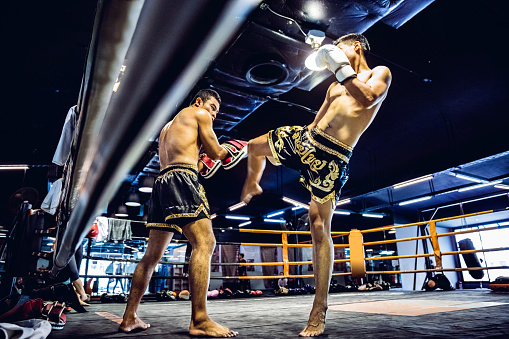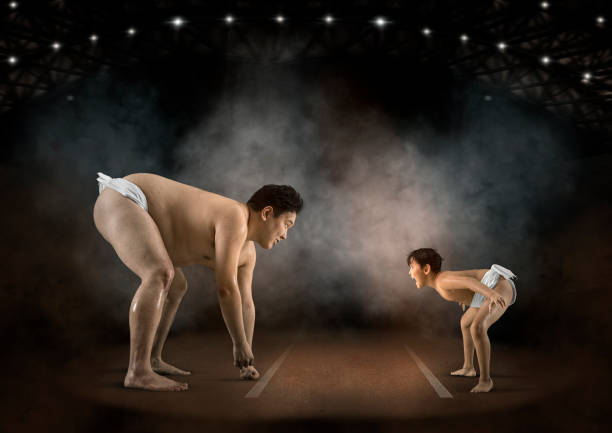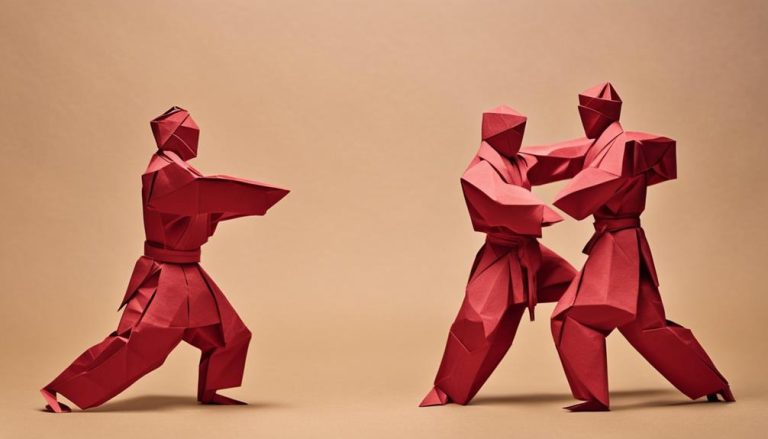General Rules of Stick Fighting
You might think stick fighting is a free-for-all, but in reality, it's a disciplined martial art with a set of strict guidelines. When stepping onto the battleground, every move and strike must adhere to the general rules to ensure fair play and safety for all participants. Have you ever wondered how these rules shape the dynamic and intensity of a stick fighting match? Stick around to uncover the intricate details that govern this ancient combat sport and the strategies that players employ to outmaneuver their opponents within these structured boundaries.
Safety Precautions
Before engaging in stick fighting, ensure your safety by following these essential precautions. Injury prevention is paramount in this intense martial art. Begin with proper warm-up exercises to prepare your body for the physical demands of stick fighting. Stretch your muscles to increase flexibility and reduce the risk of strains or sprains. Incorporate training techniques that focus on agility, coordination, and quick reflexes to enhance your ability to defend and attack effectively.
In addition to injury prevention, familiarize yourself with emergency response and first aid procedures. Accidents can happen even in the most controlled environments, so it's crucial to be prepared. Make sure you have access to a first aid kit and know how to address common injuries such as bruises, cuts, or minor sprains. Stay vigilant during training sessions and be ready to assist others if needed.
Equipment Requirements
To master stick fighting, you must understand the crucial equipment requirements. Without the essential gear for sticks and proper protective equipment, you risk injury and hinder your progress. Follow these equipment maintenance tips to ensure your gear stays in optimal condition for your training sessions.
Essential Gear for Sticks
When engaging in stick fighting, having the right equipment is essential for your safety and success in training and combat. A critical aspect of stick fighting is stick selection. Different sticks can impact your training techniques and combat effectiveness. Grip variations play a vital role in stick fighting, affecting your control and power. Understanding various grip styles can enhance your sparring strategies, enabling you to adapt to different opponents and situations. Check out the table below for a concise overview of essential gear for sticks:
| Gear | Description | Importance |
|---|---|---|
| Sticks | Various lengths and materials | Crucial |
| Grip Tape | Enhances grip strength | Essential |
| Stick Bag | Convenient storage and transport | Useful |
| Training Target | Improves accuracy and technique | Beneficial |
| Wrist Straps | Added security during training | Recommended |
Protective Equipment Needed
For stick fighting, ensuring your safety and maximizing your training and combat performance requires specific protective equipment. When engaging in this empowering art form, equip yourself with the following essentials:
- Proper padding: Shield your body from the impact of strikes with adequate padding for your arms, torso, and legs.
- Helmet necessity: Safeguard your head with a sturdy helmet designed to absorb and deflect blows effectively.
- Mouthguard: Protect your teeth and jaw from potential injury during intense sparring sessions.
- Groin protection: Ensure your safety by wearing a groin guard to prevent any unexpected accidents.
- Hand wraps: Provide support and cushioning for your hands and wrists to minimize the risk of sprains and fractures.
Stay safe, train smart, and embrace the power of stick fighting with the right protective gear.
Equipment Maintenance Tips
Ensuring the longevity and optimal performance of your stick fighting equipment demands consistent and meticulous maintenance. Proper storage and cleaning are essential for preserving your gear and maximizing its long-term durability and performance. When not in use, store your sticks in a cool, dry place away from direct sunlight or moisture to prevent warping or cracking. Regularly inspect your equipment for any signs of wear and tear, such as loose grips or splintered wood, and address these issues promptly to avoid compromising performance during training or combat. Cleaning your sticks with a damp cloth after each use can help remove dirt and sweat that could degrade the materials over time. By prioritizing equipment maintenance, you invest in the reliability and functionality of your gear, ensuring it serves you well in your stick fighting endeavors.
Target Areas
Knowing the target areas in stick fighting is crucial for effectively striking your opponent and gaining the upper hand in combat. In the heat of battle, understanding where to aim can make all the difference. Here are the key target areas to focus on:
- Head Strikes: Deliver powerful blows to your opponent's head to disorient and weaken them.
- Body Shots: Target the torso for maximum impact, causing pain and potentially disabling your opponent.
- Hands and Arms: Aim for these areas to disarm your opponent and limit their ability to fight back.
- Leg Strikes: Targeting the legs can destabilize your opponent, making it harder for them to move or defend.
- Throat and Neck: Precise strikes to these vulnerable areas can quickly incapacitate your opponent, giving you a significant advantage.
Prohibited Techniques
In stick fighting, certain techniques are deemed off-limits due to their potential for causing serious harm or injury to your opponent. Illegal moves and banned strikes have been established to ensure the safety and well-being of both fighters. As a practitioner of stick fighting, it is crucial to understand and respect these prohibitions to maintain the integrity of the sport.
Illegal moves such as strikes to the groin, eyes, throat, and back of the head are strictly prohibited. These areas are highly vulnerable and targeting them can result in severe injury or even death. Banned strikes include thrusts, pokes, and strikes with excessive force that could lead to broken bones or internal damage.
Scoring System
You're in for an exciting ride as we unravel the intricacies of the scoring system in stick fighting. Understanding how points are awarded and the criteria for winning will elevate your gameplay to new heights. Get ready to master the art of scoring in stick fighting and dominate your opponents with precision and skill.
Point System Explanation
Understanding the intricate scoring system in stick fighting is essential for competitors aiming to achieve victory in this dynamic martial art. When it comes to the point system, here are some key aspects to keep in mind:
- Clean Hits: Points are awarded for clean strikes that make solid contact.
- Target Areas: Strikes to specific target areas like the head and torso are worth more points.
- Control and Precision: Points are also given for demonstrating control and precision in strikes.
- Defensive Maneuvers: Successfully blocking or evading opponent strikes can earn you points.
- Aggression and Initiative: Showing aggression and taking the initiative in the match can influence the scoring in your favor.
Mastering these aspects can lead you to success in stick fighting competitions.
Winning Criteria Clarification
To excel in stick fighting competitions, mastering the scoring system's nuances is crucial, especially when it comes to clarifying the winning criteria. In stick fighting, understanding how points are awarded and what determines a win is essential for success. Below is a table that clarifies the winning criteria in stick fighting competitions:
| Criteria | Description | Importance |
|---|---|---|
| Clean Hits | Defined strikes landing on the opponent | High |
| Control | Demonstrating mastery and dominance | Moderate |
| Defense | Ability to protect oneself effectively | Essential |
Time Limits
When considering time limits in stick fighting, it is crucial to understand their impact on the dynamics and strategies of the combat. Time constraints play a vital role in shaping the flow of the fight, pushing fighters to adapt swiftly and make strategic decisions under pressure.
- Strategy Development: Time limits force you to refine your tactics and adapt them on the spot, enhancing your strategic thinking skills.
- Time Management: Learning to pace yourself within the time frame is key to maintaining control and conserving energy throughout the match.
- Endurance Training: Building stamina is essential to endure the duration of the fight without letting fatigue compromise your performance.
- Mental Preparation: Time limits challenge your mental fortitude, requiring you to stay focused and composed amidst the intensity of the battle.
- Adaptability: Quick thinking and the ability to adjust your approach based on the remaining time are crucial to staying ahead of your opponent.
Embrace the time limits in stick fighting as opportunities to showcase your skill, resilience, and mastery over the art of combat.
Referee's Role
The referee in stick fighting serves as the arbiter of rules and ensures fair play and safety for all participants in the combat. It is crucial for the referee to be vigilant, fair, and decisive throughout the match. Their role goes beyond just enforcing rules; they must also maintain the dynamics of the match, keeping it engaging and competitive. As a participant, understanding the referee's signals is vital, as they indicate crucial moments and ensure that the match progresses smoothly.
In stick fighting, the referee plays a pivotal role in upholding the principles of fair play and fostering a sportsmanship attitude among fighters. They are there not only to enforce rules but also to encourage respect and honor between opponents. It is essential for fighters to follow the referee's instructions promptly and to compete with integrity and honor. By maintaining a sportsmanship attitude, you contribute to the overall spirit of stick fighting, promoting a culture of respect and camaraderie within the community.
Fighting Etiquette
Maintaining proper fighting etiquette in stick fighting is essential for demonstrating respect and skill in combat. When engaging in this martial art, remember that your conduct reflects your values and abilities. Here are some key points to uphold fighting etiquette:
- Respect Your Opponent: Treat them with dignity and acknowledge their skills.
- Mindfulness in Movements: Stay present in the fight, aware of your surroundings and your opponent's actions.
- Discipline in Battles: Control your strikes and movements, showing restraint and precision.
- Follow Traditional Practices: Embrace the customs and rituals associated with stick fighting.
- Honor the Art: Pay homage to the history and lineage of stick fighting, recognizing its significance in martial arts.
Penalties and Disqualifications
To excel in stick fighting, adherence to the rules regarding penalties and disqualifications is imperative. In the heat of battle, maintaining control over your actions is key. A warning system is usually in place to ensure fair play and sportsmanship. It is crucial to exhibit proper player behavior at all times.
When engaging in stick fighting, remember that penalties can be incurred for various reasons such as striking below the belt, using excessive force, or displaying unsportsmanlike conduct. These penalties serve as a reminder to uphold the principles of respect and integrity within the sport.
Continual disregard for the rules may lead to disqualifications, resulting in a loss for the offending individual or team. Disqualifications are put in place to uphold the standards of the game and to protect the safety of all participants.
In the world of stick fighting, embodying the values of honor and discipline is paramount. By understanding and abiding by the penalties and disqualifications, you not only demonstrate your commitment to the sport but also contribute to creating a positive and respectful environment for all fighters.
Frequently Asked Questions
Can Stick Fighting Be Practiced as a Form of Self-Defense or Is It Mainly for Sport?
Stick fighting isn't just a sport; it's a practical self-defense technique. Imagine a tree bending in the wind, adapting to survive. Similarly, stick fighting equips you with skills to defend yourself in real-life situations.
Are There Any Recommended Training Drills or Exercises to Improve Stick Fighting Skills?
To improve stick fighting skills, engage in partner drills for better coordination and timing. Solo exercises enhance strength and technique. Sparring practice sharpens your reflexes, while footwork drills improve agility and positioning. Master these for success.
How Can One Properly Maintain and Care for Their Stick Fighting Equipment?
So you think maintaining stick fighting gear is a breeze? Think again! Proper maintenance means regularly cleaning and inspecting your equipment. Use protective gear, follow cleaning methods, and your gear will thank you!
Are There Any Specific Strategies or Tactics That Are Commonly Used in Stick Fighting Competitions?
In stick fighting competitions, common strategies include varying your strikes, controlling distance, and using feints to confuse opponents. Defensive maneuvers like parrying and blocking are crucial for protecting yourself while looking for openings to strike.
Are There Any Traditional or Cultural Aspects of Stick Fighting That Practitioners Should Be Aware Of?
In stick fighting, understanding the cultural significance is crucial. Dive into the traditional techniques passed down through generations. Embrace the wisdom of ancestors and let it guide your movements with honor and respect.






